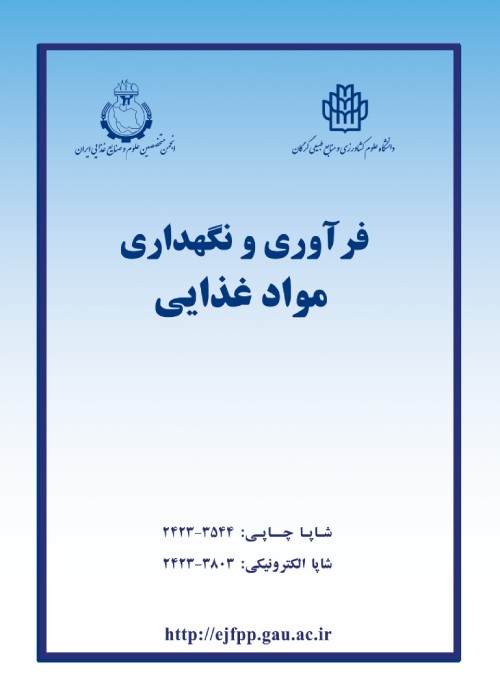Effect of different extraction methods on phenolic compounds and antioxidant properties of white mulberry (Morus alba L.) leaf extract
Oxidation is main causes of oils and fats rancidity. Oil oxidation changes the organoleptic properties of food and also reduces nutrition value and shelf life of oils. Synthetic antioxidant is added to oils and fats to preventing off-flavour that occur by oxidation. Due to the adverse effects of synthetic antioxidants such as TBHQ ،BHT ،BHA and GA on human body including mutagenic and carcinogenic effects, production of natural antioxidant as alternative for synthetic antioxidants it is necessary. The aim of this study was to evaluate the effects of extraction techniques on phenolic compounds and antioxidant activity of white mulberry leaves extract as natural antioxidant.
The white mulberry leaves after drying were milled and extracts were extracted using maceration (ethanol solvent – water, 50:50), ultrasound assisted and supercritical fluid extraction methods. Total phenolic compounds (TPC) and tocopherol (TC) were measured using Folin–Ciocalteu method and colorimetric assay and antioxidant activity of extract in 500, 1000, 1500 and 2000 ppm concentrations were measured using 1, 1-Diphenyl-2-picryl-hydrazyl)DPPH (radical scavenging, β-caroten/linoleic bleaching assays. Antioxidant activity of extracts was compared with synthetic antioxidant (TBHQ).
The TPC and TC in ultrasonic extract were higher than other extracts due to extraction conditions. The DPPH radical scavenging activity of extracts at different concentrations showed that free radical scavenging of the all samples increased with increasing of concentration of extracts and statistically significant difference was between different concentrations. Free radical scavenging value was varied from 40. 98% to 77. 46%. In β-Caroten/linoleic acid method was observed antioxidant activity of all extracts examined increased with increasing of concentration of extracts. In all concentrations examined, samples with ultrasound-assist extraction had the highest antioxidant activity and extracts with maceration extraction method showed the lowest antioxidant activity. By increasing in extract concentration from 100 to 2000 ppm, antioxidant activity increased and 2000 ppm of extract had not statistically significant difference with TBHQ.
Generally, the results of the present study indicated that the ultrasound-assist extraction was more effective in antioxidant activity of white mulberry leaf extracts in the DPPH free radical assay and β-carotene/linoleic bleachin. The high antioxidant activity of the extracts appeared to be attributed to its high tocopherol and phenolics content. Therefore, white mulberry leaf extract can be used as a natural antioxidant to replace the synthetic antioxidants in food industry
- حق عضویت دریافتی صرف حمایت از نشریات عضو و نگهداری، تکمیل و توسعه مگیران میشود.
- پرداخت حق اشتراک و دانلود مقالات اجازه بازنشر آن در سایر رسانههای چاپی و دیجیتال را به کاربر نمیدهد.


